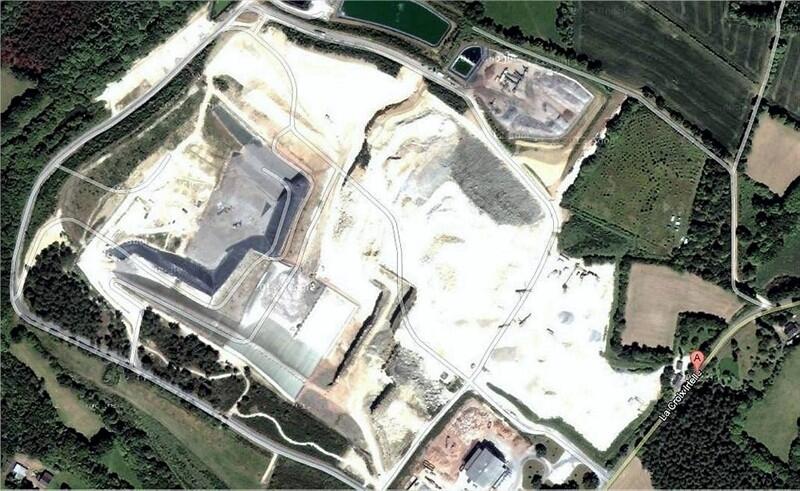The ecosites stand out as an innovative response to the environmental challenges facing our society. These exemplary places harmoniously integrate sustainable development practices, combining green technologies and environmentally respectful design. By emphasizing the reduction of the ecological footprint and the use of renewable resources, ecosites transform urban and rural spaces into true showcases of a sustainable future. Their rise reflects a desire to rethink our relationship with nature and to promote more responsible ways of life.
In a world where the ecological transition is gaining increasing prominence, the concept of ecosites emerges as a relevant and sustainable solution. By definition, an ecosite is a site designed and managed according to the principles of sustainable development, aiming to minimize environmental impacts while maximizing the well-being of residents and users.
Eco-design plays a fundamental role in the development of ecosites. It consists of integrating sustainability principles at all stages of a product or service’s life cycle. Thus, eco-design applied to an ecosite aims to reduce its environmental impact while preserving its quality and appeal. Whether in material selection, water management, or energy efficiency, every decision is made with its ecological footprint in mind.
Ecosites also promote the use of renewable energies, such as solar, wind, or biomass, to limit the use of fossil fuels. These sites are often equipped with solar panels and energy recovery systems, which significantly reduce their reliance on primary resources. Additionally, the integration of green technologies and innovative solutions is encouraged, making it a fertile ground for environmental innovation.
An ecosite, to be fully effective, must also be designed with a perspective of sustainable resource management. This includes the reduction, reuse, and recycling of materials used on site. Waste management is optimized to minimize the ecological footprint of all activities taking place there. The goal is to achieve maximum circularity within the local ecosystem.
The social dimension of an ecosite should not be overlooked. This type of site is designed to promote the well-being of individuals, whether they are residents, employees, or visitors. Green spaces, pedestrian paths, and recreational infrastructures are designed to encourage contact with nature and promote a healthy and active lifestyle. In this sense, the ecosite becomes a harmonious living space where humans and the environment coexist in symbiosis.
In terms of eco-construction, it is a central pillar of ecosites. This expanding concept uses methods and materials that minimize environmental impact. Buildings are often equipped with optimal insulation, green roofs, and natural ventilation systems, ensuring increased energy efficiency and reduced carbon footprint.
The development of an ecosite relies on a participatory approach, involving stakeholders throughout the project. Municipalities, local businesses, environmental experts, and citizens work together to develop solutions adapted to regional specificities. This tripartite partnership ensures that the ecosite meets local needs while contributing to global sustainable development goals.
In summary, ecosites represent an integrated and visionary approach to sustainable territorial development. Through the concrete application of eco-design principles and the ecological transition, they actively participate in reducing environmental pressures while providing an improved quality of life. These exemplary sites illustrate how ecological growth can fit into a respectful economic and social model for present and future generations.

FAQ about the Ecosite Concept
Q : What is an ecosite?
A : An ecosite is a place or facility designed to reduce the environmental impact of human activities. It integrates ecological practices such as solar energy, waste recycling, and water conservation.
Q : What are the main characteristics of an ecosite?
A : The main characteristics of an ecosite include the use of renewable energies, sustainable management of natural resources, and a reduction of greenhouse gas emissions.
Q : How does an ecosite differ from other sustainable developments?
A : An ecosite is distinguished by its integrated and systemic approach. It does not focus solely on one aspect such as energy or waste but aims to create a sustainable and balanced ecosystem.
Q : What are the benefits of an ecosite for a business?
A : Benefits for a business include reducing operational costs through efficient resource use, improving brand image, and increased compliance with environmental regulations.
Q : What is the importance of ecosites in the ecological transition?
A : Ecosites play a crucial role in the ecological transition by serving as innovative examples showing how economic activities can align with sustainable development goals.
Q : Are there recognized ecosites in France?
A : Yes, several ecosites are recognized in France, especially those using advanced eco-design and urban regeneration concepts.
Q : How does an ecosite contribute to biodiversity?
A : An ecosite contributes to biodiversity by integrating practices that regenerate natural habitats and closely monitoring the impact of its activities on local ecosystems.
Articles similaires
Thank you!
We will contact you soon.













